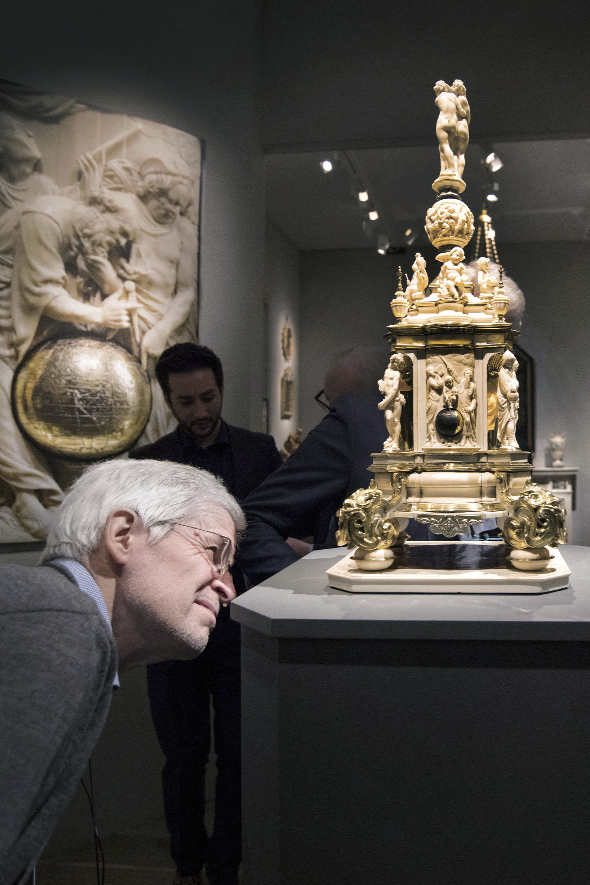LA LEGGE DELL’ARTE/ Giuseppe Calabi
Due to its delicacy and value, an art object is usually considered a “precious thing”. Therefore, whomever decides to invest in works of art must bear in mind some factors in order to limit the risks arising from such investments. The following instructions represent what is usually called the collector’s “due diligence”. These form a list (a non-exhaustive one) of the tools necessary to understand when the purchase is actually a “bargain” and when it is best not to buy.
Property and provenance: from the judicial point of view, works of art, despite their economic value, are non-registered movable assets. This implies that, in most cases, the person the work of art belongs to is also its owner due to the principle stating that “ownership has the same value as claim”. Unfortunately, there are some exceptions to this: think of public property assets, for example, to which usucaption cannot be applied. Good practice: the collector can avoid problems by ensuring that the work of art is not registered in a data base of stolen works, for example the ones stolen during war periods, in The Art Loss Register or in the data base of the Cultural Heritage Protection Centre of the Carabinieri, accessible online. Another useful piece of advice: purchase only through well-known and recognised channels, such as auctions, art dealers and credited art galleries.
No constraints: in many countries, the works of art that are considered “cultural assets” or “national treasures” (this term is used in both France and the UK) are subject to specific protection norms. If such labels are applicable to a work of art, the law imposes a series of “constraints” regarding its conservation and circulation. In Italy, such constraints impose on the owner a series of obligations and prohibitions such as the obligation to state the sale of the work of art to third parties (in such case, the State can exercise its pre-emption right over the assets sold or transferred for consideration) as well as the prohibition to export the asset. Good practice: in case of a foreign owner or work of art, the art collector shall request the export documents to the country of origin.
Authenticity or attribution: regarding contemporary works of art, a work of art is considered authentic when the artist recognises the authorship of the work itself, stating that they created the work. As for ancient or modern works of art, their “attribution” depends on experts’ technical reports stating that it is possible to affirm with sufficient certainty that the work of art in question can be attributed to a no-longer living artist. The authentication by foundations of artist archives represents yet another case: these can issue a document stating that the work of art belongs to the artist and, if necessary, that the work is registered in the general archive and/or in the raisonné catalogue of the works. Finally, the work of contemporary art can be recognised (or unrecognised) by a subject other than the artist but linked to the same by a specific family relationship (art. 23 of Law 633 of 22 April 1941 – Copyright Law – prescribes that, after the death of the author, the right to claim paternity of the work can be asserted by children and spouse or, in their absence, by parents and other direct ascendants and descendants, or alternatively by brothers and sisters and their descendants).
Good practice: in order to avoid unpleasant surprises, the collector of ancient or modern works of art can request that the seller provide expertise, coming from an authoritative and competent expert in relation to both the type of work and the artist. Such expert can thus confirm the attribution to a determined artist as well as establish the real price of the work (a painting attributed to Caravaggio, in fact, is worth much more than a painting attributed to the school of Caravaggisti).
As for works of contemporary art, it is important to always verify that the work is archived or is provided with a certificate issued by the foundation or by the reference archive, if existing and operating in the field of authentication, or with the artist’s statement of authenticity. In the case of certificates issued by heirs, it is always better to ascertain the history of the artist, since it has occurred several times in the past that an heir was not a competent subject or was not entitled to make such statements (as happened in France, for example in the case of the heirs of Pablo Picasso).
In Italy, art. 64 of the Code of Cultural Heritage requires the professional operator to provide the buyer with all the documentation available on the authenticity or origin of the work (or, in their absence, to issue a declaration containing all the information available in relation to the nature of the work or the object on a photographic copy of the work itself): in the absence of such documentation, or in the presence of suspicious information surrounding the work of art, it is much better not to buy to avoid bad surprises!
State of Conservation: finally, it is always good to assess the state of conservation of the work and get a condition report issued, which is a document that describes the state of the work at the time of purchase.
Once the above elements have been verified, the collector will be able to make a more informed purchase and, while accepting the risk associated with the nature of the work of art, be sure to have done everything possible to “buy successfully”.

